Licensing Made Easy for Your Mortgage Career
Navigate Your Path to a Mortgage Broker or Loan Officer License
Start Today, Close Loans in 90 Days (Yes, Really)
Often, the question isn’t if you’ll license—it’s how much effort will it take and what exactly must you do. Whether someone is exploring new “jobs in the mortgage industry,” making great progress in real estate, or already a loan officer thinking about ownership, what becomes clear is that the licensing path can be straightforward if you follow each step with clarity and precision. From individual licensure to company filings, understanding the process is the starting point.
The Three License Types You Should Know
There are three primary licensing categories that matter depending on the role you assume:
Individual License (MU2): This allows a professional to direct or originate loans as a licensed individual.
Company License (MU1): Applies when launching or owning an independent mortgage brokerage.
Branch License (MU3): Required by many states for any additional physical location beyond the main office.
Licensing Timeline & Core Milestones
The individual license often serves as the first milestone in a “career in mortgage lending,” even for those planning brokerage ownership. The essential journey looks like this: obtain an NMLS account, complete required pre‑licensing education, enrol in the mugatory exam, submit fingerprints and credit authorizations, then file through the NMLS with all documentation. Some complete the process in as little as 5‑6 weeks; others take several months depending on pace and preparation.
Bullet List (key steps):
Create an NMLS account and obtain your unique ID.
Complete at least 20 hours of NMLS‑approved pre‑licensing education.
Pass the SAFE MLO exam with a minimum score of 75 %.
Submit fingerprints, authorize credit checks and background reviews.
Apply through NMLS for your individual license and obtain employer sponsorship or proceed to company‑filing if launching your brokerage.
Why Now Is the Ideal Time to Open Your Own Brokerage
Independent, Scalable & Technology‑Driven — Your Path Starts Here
There’s never been a better moment to launch a mortgage brokerage. The tools? They’ve matured. Peer networks and industry associations? They only started ramping up in the late 2010s. Today’s independent broker can function as a solo shop — or scale into a multi‑branch powerhouse. And that flexibility matters when you’re choosing your growth path.
Independent brokerages currently originate about one in every five U.S. home loans — and that share is only expected to climb. With stronger technology, better associations, and more accessible models, the road to ownership is more open than ever. Whether you want to stay small and agile or build bigger, the structure works. You just have to set it up correctly.
Independent brokerages now handle roughly 20% of all U.S. mortgage originations and the trend is upward.
The technology stack for brokers (CRM, LOS, digital closings) is exponentially better — less overhead, faster launch.
You can start as a one‑person brokerage, evolve into a team leader, or build a full‑scale firm — the choice is yours.
Documenting and filing the right licenses (MU2, MU1, MU3) now moves faster if the process is understood ahead of time.
Curious about the exact filings and paperwork needed for your company and branch licenses? The next video and section will walk through what to submit—and how to speed your timeline without missing a beat.
Branch Licenses & Expanding Your Mortgage Business
When and Why Your Brokerage Needs a MU3 Filing
Launching your own mortgage brokerage is one thing—scaling it to multiple locations is another. If you're operating beyond a single address or entering certain state markets, you may be required to secure a branch license (the MU3 form in the Nationwide Mortgage Licensing System & Registry, or NMLS system). While not every state demands this, for many it’s a critical step to keep your “career in mortgage lending” or “jobs in the mortgage industry” path compliant and future‑proof.
A branch license (MU3) applies when a company opens a location beyond the main office and is required in many, but not all, states.
The MU3 must typically be submitted after the company license (MU1) is approved—branch filings rely on the parent company license.
Some states operate full branch‑licensing rules; others only require a branch for 2nd, 3rd or further locations.
Branch filings require documented physical location, a designated branch manager, and adherence to state‑specific forms and fees.
Choosing to skip the branch licensing step—or misunderstand the rules—can stall pipes, create legal exposure, or delay your growth. For instance, if you expand into a state that requires every branch to be approved (like California under the CRMLA), a MU3 filing must be submitted for each location seeking to conduct business there. Best practice: confirm state‑specific list of branch requirements early, embed it into your growth plan, and align the timing of your expansion with filings.
Next section: we’ll walk through a practical checklist & timeline you can download that lists company license (MU1), branch license (MU3), and individual license (MU2) steps side‑by‑side—so you never lose sight of “what’s next” in your journey from loan officer to owner.
Understanding the MU1: Your Company License Roadmap
What the MU1 Does and How It Fits Your Licensing Strategy
The MU1—also called the Company Form in the Nationwide Mortgage Licensing System & Registry (NMLS)—is the foundational application your business submits when launching a mortgage‑brokerage or lender. Think of it as the doorway into operating legally: it registers your business name, office locations, ownership structure, and the states where you plan to do business.
Key Components of the MU1
The MU1 registers your legal business name, any DBAs, and your principal address.
It details ownership and control persons—who runs the business, who has authority.
It declares in which states you’ll operate, and under which business activities (broker, lender, etc.).
It assigns a Registered Agent and a point of contact for regulatory and compliance communication.
What Happens After You File the MU1
Every state where you apply receives the corresponding MU1 filing via the NMLS system. But be clear: filing the MU1 form alone doesn’t finish the job—it triggers a deeper state‑specific review. Most states will then ask for additional documents like surety bonds, financials, business plans, affiliate information, and background checks.
Multi‑State Licensing? How the MU1 Serves You
If you plan to extend your brokerage into multiple states, the MU1 works as a central submission. You file the MU1 once through NMLS—but you’ll still comply with each state’s checklist. You can get your list of each states specific licensing requirments by visiting mortgage.nationwidelicensingsystem.org. That means each licensing state will review your MU1 data and then request its specific extra items, plus the state application fee.
Licensing the People Behind the Business
What the MU2 Form Is—and Who Needs to Complete It
The MU2 form is a required piece of the mortgage licensing puzzle that gives state regulators insight into the individuals running the company. While the MU1 establishes your business entity, the MU2 tells the story of the people behind it—owners, executives, and qualifying individuals. This form is not submitted separately. Instead, it’s completed by each person listed on the MU1 and automatically attaches to the company license application through NMLS.
Who Must Submit the MU2 Form
The MU2 must be completed by any individual with decision-making authority, financial control, or substantial ownership. Common roles include:
Executive officers (CEO, President, CFO)
Direct or indirect owners (typically 10% or more ownership, or as defined by state law)
Qualifying Individuals (QIs), designated as experienced license holders
Control persons involved in operations, policies, or compliance
States may interpret control more broadly, so individuals with significant influence—even below the ownership threshold—may still be required to submit an MU2.
What’s Included in the MU2
Each person completing the MU2 provides personal background information to satisfy regulatory due diligence. Required fields include:
Personal details: legal name, date of birth, Social Security number, address history
Employment background: 10 years of job history, with roles and titles
Criminal and regulatory history disclosures
Credit report and fingerprint authorization
Role in the company and ownership percentage (if applicable)
Signature attestation to verify the accuracy of the information
Sensitive information is encrypted and securely stored in NMLS, visible only to regulators reviewing your application.
Supporting Documents for MU2s
In many states, MU2 participants are also required to upload additional documents, such as:
Personal financial statements
State-specific control person forms or background authorizations
Resume or CV (especially for QIs)
Written explanations for any “Yes” answers to background questions
How the MU2 Fits Into the Licensing Workflow
Once a company submits the MU1, the NMLS automatically prompts each control person listed to complete their own MU2 through an individual NMLS account. The application is not considered “complete” until all MU2s are submitted and verified. If any person fails to complete their MU2, the company’s application will stall.
Licensing Your Branch Locations
Every Office Counts—Here’s How to Get Them Approved
As your mortgage business grows, so does the need to license additional office locations. That’s where the MU3 form comes in. Filed through the Nationwide Multistate Licensing System (NMLS), the MU3 is required for every branch location where mortgage activity takes place—even if it’s in the same state as your main office. Whether you're expanding across state lines or simply adding a satellite office down the road, a separate MU3 is often mandatory.
When a Branch License Is Required
You’ll need to file an MU3 for each office where any of the following occurs:
Loan originators operate (even remotely, in some cases)
Mortgage transactions or consultations are conducted
Consumers are contacted or marketing is distributed
Business is performed under a different location than HQExecutive officers (CEO, President, CFO)
This includes co-working spaces, home offices, and virtual branches—if any mortgage-related activity is taking place. Some states are more strict than others, so it’s essential to check your local NMLS guidelines.
What the MU3 Form Includes
Each MU3 form collects information about the branch’s setup and oversight. Here’s what you’ll be asked for:
Physical Branch Address (no P.O. Boxes)
Branch Manager Info (including NMLS ID; often must be a licensed MLO)
Business Activities conducted at that location
DBAs or Trade Names used for marketing the branch
Employee List (if required by the state)
Books & Records storage location
Parent Company Details (automatically linked to your MU1)
Attestation & Signature verifying the information
Some states require that the Branch Manager meet specific criteria—such as holding an MLO license in-state or maintaining a physical presence at the office.
Supporting Documents That May Be Required
Depending on the state, regulators may ask for:
A copy of your lease agreement or utility bill
A resume for the designated Branch Manager
A branch-specific surety bond
A Certificate of Authority from the Secretary of StatePersonal financial statements
The NMLS dashboard will guide you through uploading these documents during your application process. Be sure to check your state’s checklist for exact requirements.
Licensing Your Branch Locations
Every Office Counts—Here’s How to Get Them Approved
As your mortgage business grows, so does the need to license additional office locations. That’s where the MU3 form comes in. Filed through the Nationwide Multistate Licensing System (NMLS), the MU3 is required for every branch location where mortgage activity takes place—even if it’s in the same state as your main office. Whether you're expanding across state lines or simply adding a satellite office down the road, a separate MU3 is often mandatory.
When a Branch License Is Required
You’ll need to file an MU3 for each office where any of the following occurs:
Loan originators operate (even remotely, in some cases)
Mortgage transactions or consultations are conducted
Consumers are contacted or marketing is distributed
Business is performed under a different location than HQExecutive officers (CEO, President, CFO)
This includes co-working spaces, home offices, and virtual branches—if any mortgage-related activity is taking place. Some states are more strict than others, so it’s essential to check your local NMLS guidelines.
What the MU3 Form Includes
Each MU3 form collects information about the branch’s setup and oversight. Here’s what you’ll be asked for:
Physical Branch Address (no P.O. Boxes)
Branch Manager Info (including NMLS ID; often must be a licensed MLO)
Business Activities conducted at that location
DBAs or Trade Names used for marketing the branch
Employee List (if required by the state)
Books & Records storage location
Parent Company Details (automatically linked to your MU1)
Attestation & Signature verifying the information
Some states require that the Branch Manager meet specific criteria—such as holding an MLO license in-state or maintaining a physical presence at the office.
Supporting Documents That May Be Required
Depending on the state, regulators may ask for:
A copy of your lease agreement or utility bill
A resume for the designated Branch Manager
A branch-specific surety bond
A Certificate of Authority from the Secretary of StatePersonal financial statements
The NMLS dashboard will guide you through uploading these documents during your application process. Be sure to check your state’s checklist for exact requirements.
MU4: Licensing for Individual Mortgage Loan Originators
What Every MLO Needs to Stay Licensed and Compliant
The MU4 is the individual license application that every mortgage loan originator (MLO) must complete to legally originate loans. Filed through the Nationwide Multistate Licensing System (NMLS), this form is personal to the individual and remains tied to the company sponsoring them. Without an active MU1 sponsorship, an MU4 license cannot be approved or maintained.
How the MU4 Filing Process Works
Here’s what the standard MU4 workflow looks like from start to finish:
MLO creates an NMLS account and enters their personal info
Sponsoring company (via MU1) submits a sponsorship request
MLO accepts the sponsorship request
NMLS notifies the state regulator of the connection
Regulator reviews the application and grants approval if all requirements are met
Important: If an MLO changes companies, a new sponsorship request must be submitted before they can originate loans under the new entity.
What’s Required for MU4 Approval
To file and maintain an MU4 license, each MLO must:
Complete 20 hours of NMLS-approved pre-licensing education
Pass the SAFE Act national test (plus any required state components)
Submit fingerprints for an FBI criminal background check
Authorize a credit report for financial responsibility review
Answer all disclosure questions truthfully
Complete continuing education (CE) annually
Renew their license every year via NMLS (typically by Dec 31)
What State Regulators Are Looking For
State regulators use MU4 submissions to evaluate whether the MLO is:
Financially responsible (no unresolved delinquencies or recent bankruptcies)
Of sound character and ethics (no history of fraud, dishonesty, or serious infractions)
Properly educated and tested per the SAFE Act
Free of any regulatory or enforcement actions that would disqualify them
Supporting Documents You May Need
Depending on the state, MLOs may be asked to upload or submit:
NMLS test results (auto-linked once passed)
Proof of completed pre-licensing education
State-specific authorization forms or affidavits
Explanations for any "Yes" responses to background/disclosure questions
Fingerprints (submitted via approved NMLS vendor)
Ready to Become a Mortgage Broker?
Let’s Map Out Your First (or Next) Move
Whether you're just starting your research or already halfway through your licensing, you're not alone. We've helped hundreds of professionals—from first-time loan officers to multi-branch brokers—turn career goals into scalable, profitable businesses.
You’ve explored the steps. You understand the costs, the tools, the path. Now it’s time to put your plan into motion—with real guidance, real systems, and real momentum behind you.
AS FEATURED IN:







Co/LAB Corporate
8795 Peach Street,
Erie, PA 16509
Company
Resources
Learn more about who we are, what we do, and how we can help you by visiting our other company websites.
www.becomeamortgagebroker.info




